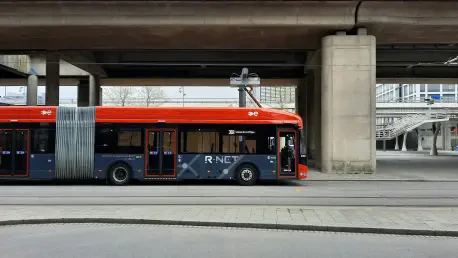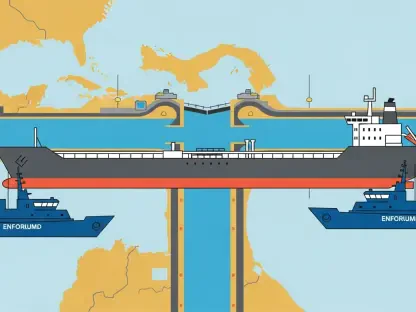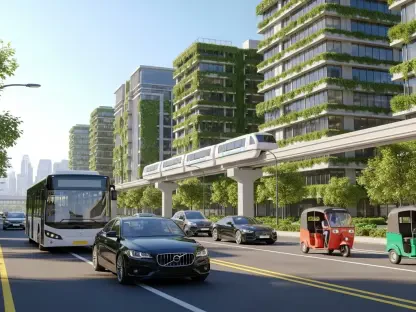In a world increasingly driven by the urgent need to reduce carbon emissions, the Netherlands has emerged as a surprising frontrunner in the adoption of battery-electric light commercial vehicles (LCVs), witnessing an unprecedented surge in electric van registrations. This small but innovative nation has captured global attention, raising a critical question: can this momentum ignite a broader transformation across Europe? With urban centers implementing strict zero-emission zones and businesses facing mounting pressure to go green, the Dutch model offers a glimpse into a potential future where electric LCVs dominate the roads. The remarkable growth in this sector is not merely a statistic but a testament to how policy, infrastructure, and economic incentives can align to accelerate sustainable change. As other countries grapple with slower progress, the Netherlands stands as a beacon of possibility, challenging the status quo and prompting a deeper examination of what drives such rapid electrification in the commercial vehicle space.
Driving Forces Behind Dutch Dominance
The Netherlands has set an extraordinary benchmark in the electric LCV market, with registrations of battery-electric vans soaring to over 70% of total LCV registrations in the first half of the current year. This dramatic rise is fueled by a unique combination of factors that have created fertile ground for electrification. A significant contraction in the overall LCV market has shifted focus toward electric options, while urban policies like zero-emission zones in major cities such as Amsterdam compel businesses to adapt. Additionally, favorable tax incentives for electric vans over traditional internal-combustion engine models have tipped the financial scales, making the switch more appealing. The country’s dense network of public charging stations further alleviates concerns about range and downtime, providing a robust support system for fleet operators. This confluence of strategic policies and infrastructure investment has positioned the Netherlands as a leader, with projections suggesting a sustained high market share for electric LCVs in the near term.
Beyond the numbers, the Dutch success story reveals a blueprint for how systemic changes can drive industry shifts. The government’s proactive approach in reshaping urban logistics through regulatory measures ensures that businesses have little choice but to embrace electric alternatives. Unlike many other regions where adoption is hindered by fragmented policies, the Netherlands demonstrates a cohesive strategy that aligns environmental goals with economic realities. Tax breaks specifically tailored for electric vans reduce the upfront cost burden, while the charging infrastructure addresses practical concerns for daily operations. This holistic framework not only encourages adoption among large fleets but also supports small and medium-sized enterprises, which form the backbone of the LCV sector. As a result, the Netherlands offers valuable lessons for other nations aiming to replicate this model, highlighting the importance of integrating policy with practicality to achieve meaningful progress in electrification.
Challenges in Broader European Adoption
While the Netherlands shines as a pioneer, the rest of Europe faces a much slower journey toward electric LCV adoption, revealing stark disparities across the continent. Major economies like Germany, the UK, and Spain report significantly lower market shares for battery-electric vans, often hovering below 10%. The primary obstacles include the higher upfront costs of electric vans compared to diesel counterparts, which deter many businesses from making the transition. Limited driving ranges also pose a challenge, particularly for companies operating in rural or long-haul scenarios where charging infrastructure remains sparse. Despite the introduction of new electric models by leading manufacturers, these barriers continue to stifle widespread uptake. The contrast with the Dutch experience underscores how local conditions and policy frameworks can dramatically influence outcomes in this sector.
Compounding these challenges is the uneven pace of infrastructure development across European nations, which hinders a unified push toward electrification. Unlike the Netherlands, where charging points are plentiful and accessible, many countries struggle with inadequate networks that fail to instill confidence in potential adopters. Urban zero-emission policies are gaining traction in some regions, nudging demand for electric LCVs, but their implementation varies widely in scope and enforcement. Additionally, the economic calculus for businesses often prioritizes short-term savings over long-term sustainability, especially in markets with less generous incentives. This fragmented landscape suggests that while the technology for electric vans is advancing, the ecosystem required to support mass adoption lags behind in many areas. Addressing these gaps will require targeted investments and coordinated efforts to level the playing field and encourage a broader shift away from fossil fuel-dependent vehicles.
Regulatory Shifts and Future Projections
Regulatory frameworks are evolving to support the electrification of LCVs, with the European Commission introducing a pivotal Industrial Action Plan earlier this year. This initiative offers manufacturers flexibility by extending compliance periods for CO₂ emissions targets over a multi-year span, reducing the immediate pressure to meet stringent deadlines. However, current forecasts indicate that achieving the necessary market share for battery-electric vans to comply with emissions goals remains elusive in the short term. Projections suggest a gradual increase in adoption, but full compliance may stretch beyond initial timelines. This regulatory breathing room provides an opportunity for innovation, yet it also highlights the gap between ambition and reality in the push for cleaner commercial transport across the region.
Looking further ahead, long-term forecasts paint an optimistic picture for electric LCVs in Western and Central Europe, with adoption rates expected to climb significantly over the next decade and beyond. By 2030, nearly half of the market could be electric, with projections nearing complete electrification by 2040. This trajectory, though slightly behind that of passenger cars, signals a transformative shift in the commercial vehicle landscape. Alternative technologies, such as hydrogen fuel-cell vehicles or e-fuels, are unlikely to play a major role due to scalability issues and inconsistent policy support across nations. Instead, the focus remains on battery-electric solutions, bolstered by ongoing advancements in technology and infrastructure. These projections emphasize the inevitability of electrification, even as the pace varies by region, and underscore the need for sustained commitment to overcome existing barriers.
Lessons Learned for a Sustainable Shift
Reflecting on the strides made, it becomes clear that the Netherlands has carved out a unique path by aligning policy, infrastructure, and economic incentives to drive electric LCV adoption at an unprecedented rate. The dramatic surge in registrations showcases how targeted urban regulations and tax benefits can reshape business decisions in favor of sustainability. Across Europe, the slower progress in other nations highlights the critical role of localized strategies in addressing cost and range challenges that once seemed insurmountable. Regulatory adjustments have provided a necessary buffer for manufacturers, allowing space for innovation while acknowledging the complexities of market transitions.
As the journey toward electrification continues, the focus must shift to scalable solutions that can bridge regional disparities. Investments in charging networks must be prioritized to build confidence among businesses, particularly in underserved areas. Governments should consider replicating Dutch-style incentives, tailoring them to local needs to encourage adoption across diverse markets. Collaboration between policymakers, manufacturers, and fleet operators will be essential to sustain momentum and ensure that the lessons from this pioneering nation inspire a continent-wide revolution in commercial transport.









